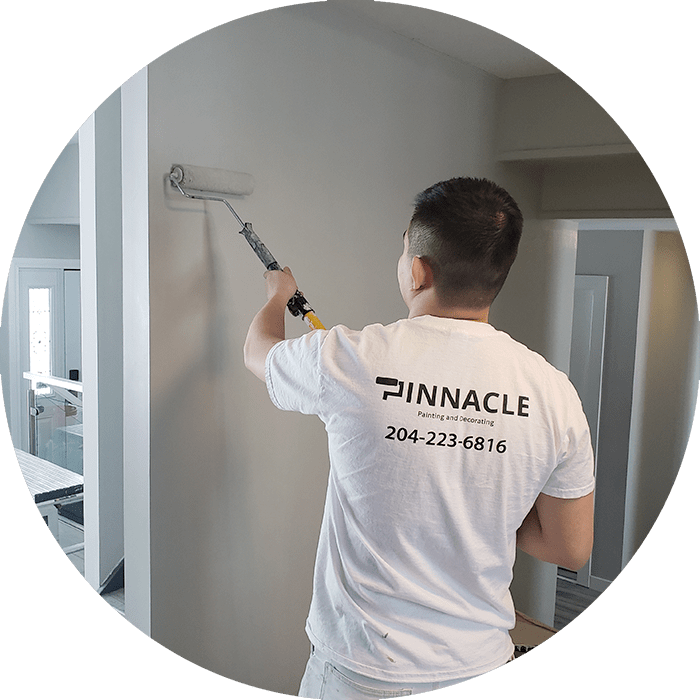17 Aug Can You Paint Over Wallpaper?
 Few tasks are more tedious than the process of removing wallpaper; it’s dreaded by homeowners everywhere. The vintage wallpaper in your house has probably seen better days. If it’s an eyesore, you might want to tear it off your walls – but you may be afraid of damaging the drywall underneath. In these cases, you might ask yourself: is it okay to paint over wallpaper, or will it look worse than it did in the first place?
Few tasks are more tedious than the process of removing wallpaper; it’s dreaded by homeowners everywhere. The vintage wallpaper in your house has probably seen better days. If it’s an eyesore, you might want to tear it off your walls – but you may be afraid of damaging the drywall underneath. In these cases, you might ask yourself: is it okay to paint over wallpaper, or will it look worse than it did in the first place?
Do you need a quick solution? If you’re looking to fix your outdated wallpaper in a hurry, you might consider painting over it. Wallpaper that’s attached directly to drywall can damage its structure when removed. Stripping back multiple layers of paper can be downright impossible. Test the integrity of your wallpaper by trying to peel one of the corners; if it seems fully secured, you might be better off painting it than risking damage to your walls. If you can easily remove the wallpaper, take the time to do so before painting. But when your wall poses unique challenges, you may opt to paint over it instead.
Many wallpapers are embossed or textured; in these cases, is it still safe to paint over them? The answer depends on the depth of the pattern. If you are simply seeking to alter the colour of your wallpaper without hiding the texture, then you’re in luck; this is doable. But highly textured walls with deep imprints can be challenging to cover up.
Before you paint over your wallpaper, you’ll want to prepare properly to improve the results. Remove any dust that’s on the surface by using a vacuum and a washcloth. If any corners of the wallpaper are peeling up, use an adhesive to reattach them. To prepare the surface for painting, you should sand the wallpaper if it has any bubbles or bumps. Use a thin line of clear caulking between the floor and ceiling so that your paint will not peel up. The difficulty with painting wallpaper is getting the product to adhere to the material. For this, you’ll need a primer.
Primers create an even finish. They help the paint bond to the surface underneath. Without a primer, the finished product may result in unsightly brush strokes and blotchiness. Wallpapers need an oil-based primer so they seal the paper underneath; be careful to ensure proper ventilation of the room during this process. After an hour, the primer will have dried completely, and you can begin painting.
Make sure to use an oil-based paint when you’re covering wallpaper – water-based paint can reactivate the adhesive and cause peeling. Once you’re satisfied with the opacity, be sure to protect your walls with a sealer. It will help smooth out any bumps or ridges that may have developed during the process. If your wallpaper has a vibrant pattern, it may require multiple coats before it’s covered completely.
In most cases, the results of painting over wallpaper can be less than desirable. Without the expertise of professional painters, your walls might look blotchy and peel up in no time. When it comes to covering paper patterns and textured surfaces, it’s best to leave it to the professionals – Pinnacle Painting offers residential painting services in Winnipeg. We’ll make sure your walls look smooth, refined, and stylish.
